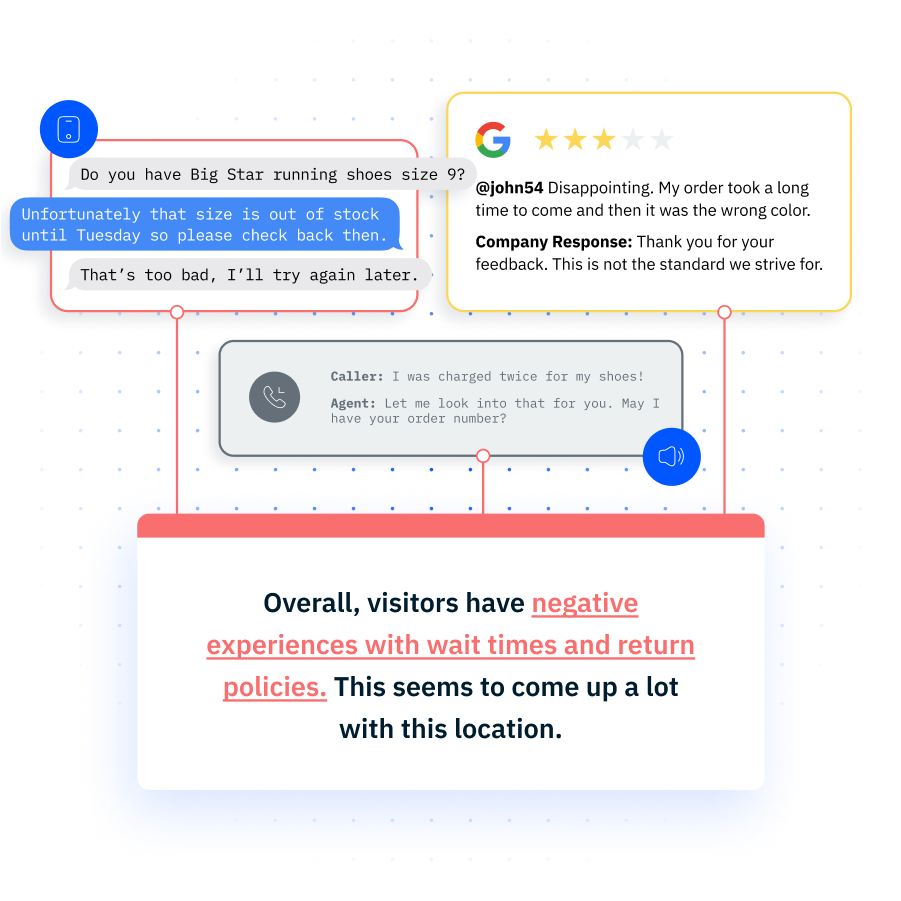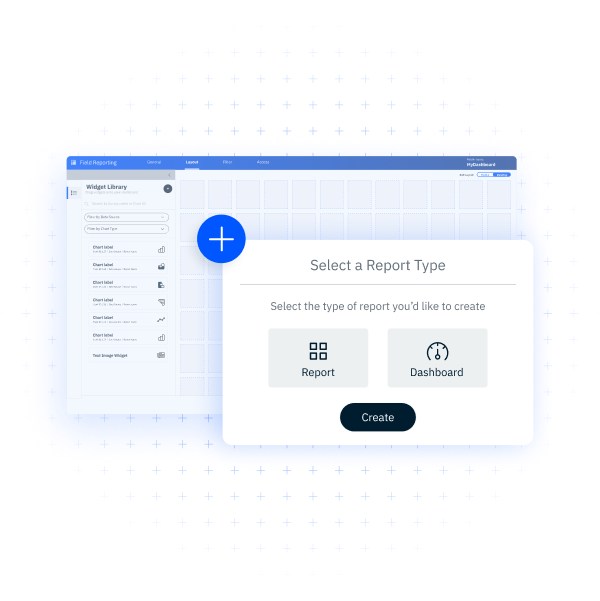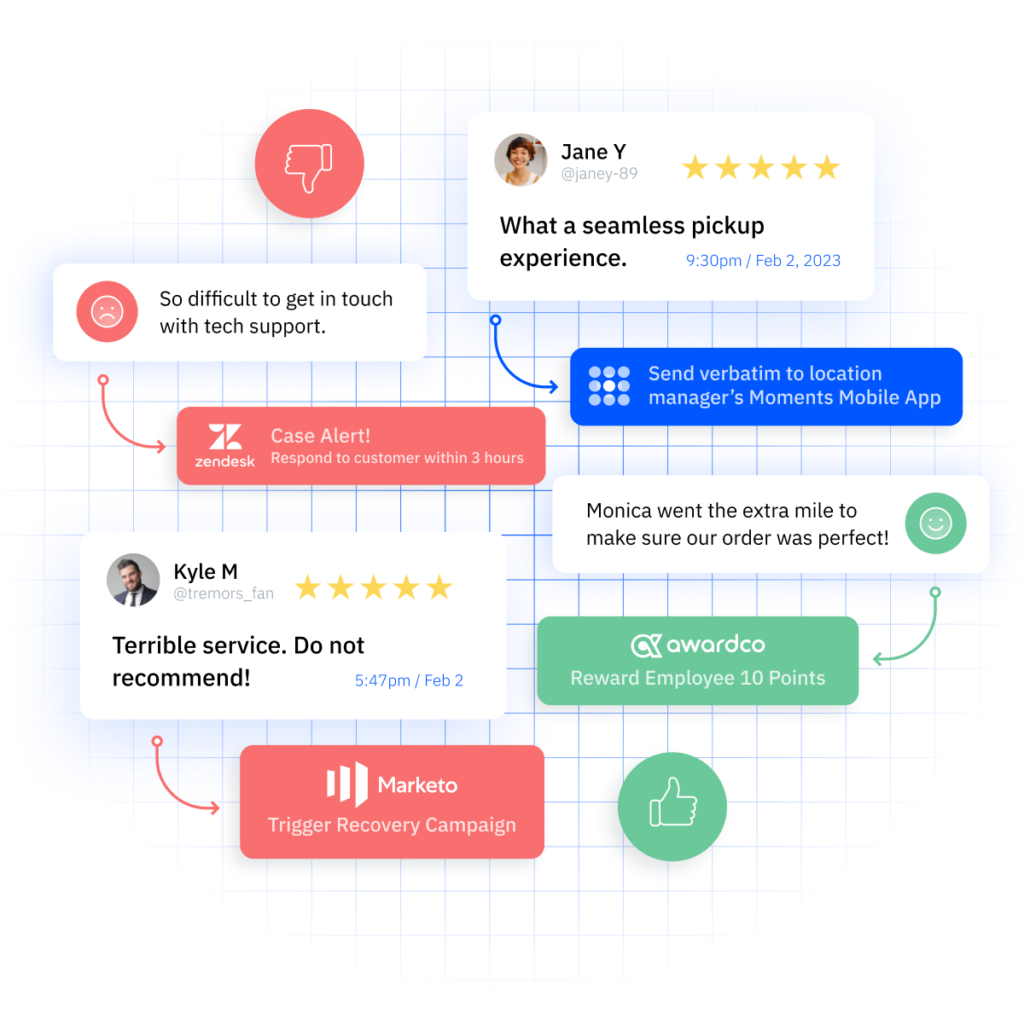Why A Customer Engagement Platform Is Crucial for Business Success
A customer engagement platform allows your business to interact with every customer, on every channel, all in one place. Organizations that invest in customer engagement platforms see increases in revenue, loyalty, and satisfaction.
Did you know that brands that invested in customer engagement saw an average revenue increase of 68%, with top-performing brands realizing a 123% increase in revenue? With acquisition costs at an all-time high, it has never been more important to engage your customers in a way that makes them lifelong fans of your brand. This can be done by using a customer engagement platform.
What is a Customer Engagement Platform?
A customer engagement platform is a tool that allows businesses to interact with customers on different platforms, all in one place. Customer engagement platforms consolidate customer data into one location and provide tools to engage customers consistently and personally, regardless of how they interact with your business. This means you never have to leave your customer engagement platform if you respond to a customer via email, SMS, online review, or chatbot.
What is the Difference Between a Customer Engagement Platform and Customer Relationship Management (CRM)?
Debating the differences between customer engagement platforms and CRM systems is natural. When doing so, some key differences need to be considered.
Customer Relationship Management (CRM)
Customer relationship management systems utilize the data of existing customers and focus internally. CRMs are typically used by teams managing the current relationships of clients or accounts. They aim to convert leads to closed deals, identify the most successful business activities, and manage the communication between businesses and current customers.
Customer Engagement Platform
Customer engagement platforms, however, are external and focus on the interaction between customers and consumers. They integrate with apps, websites, and social media to provide a consistent customer experience across all channels. These platforms focus on improving customer experience metrics such as customer satisfaction, loyalty, and retention.
The Importance of Customer Engagement Platforms
Today, 70% of consumers expect a response from a customer service team within the same day. If your brand takes longer than that to respond to customers, you risk damaging your customer experience and brand reputation management efforts.
Customer engagement platforms are crucial for organizations to maintain and improve customer experience. You can create alerts when a response is needed and respond to customers on different channels while never having to leave your chosen customer engagement platform.
Benefits of Using a Customer Engagement Platform
Customer engagement platforms can be extremely valuable for organizations focused on delivering a positive customer experience. By providing the tools necessary for effective communication, personalization, and analytics, these platforms enable businesses to build stronger relationships with their customers. Here are some expected benefits of using an omnichannel customer engagement platform:
More Valuable Customer Interactions
Customer engagement platforms will lead to more productive interactions with your customers. When you can engage with customers across different platforms and see where those customers have contacted you and what they have said, you are more equipped to help them with their inquiries.
Improved Customer Loyalty
Customer engagement platforms increase customer loyalty by making the customer experience engaging and consistent throughout the whole customer journey. Research shows that loyal customers are 64% more likely to make more frequent purchases from your business than regular customers.
Higher Customer Retention
Organizations that are engagement leaders, companies that are trailblazing omnichannel engagement and providing a personalized customer experience, have a higher retention rate than companies that do not have mature customer engagement programs. Engagement leaders have a retention rate of 77%, whereas non-engagement leaders have a retention rate of just 43%. By succeeding in customer engagement, you have a better chance of keeping your customers coming back.
Competitive Advantage
While most companies claim to be customer-obsessed, a recent study showed that only 15% are actually customer-obsessed, meaning their business is focused on growing by delivering value to their customers. One key factor in becoming a truly customer-obsessed company is using a customer engagement platform. When you reach customer-obsessed status, you set yourself apart from the competition and stand out in the market.
Higher Profit Margins
Most organizations that prioritize customer engagement reported higher margins than those that do not. An omnichannel strategy plays a crucial role in this success. It ensures that customers can seamlessly transition between different platforms and communication channels during their journey—whether they start by browsing on a mobile app, switch to a desktop, and later engage via social media.
Best Customer Engagement Platforms
Customer engagement platforms are critical in helping businesses build long-lasting relationships with their customers by streamlining communications, enhancing experiences, and providing actionable insights. Here are five of the best customer engagement platforms available:
1. InMoment
InMoment is the best customer engagement platform for organizations looking for the premier solution for their customer experience initiatives. G2 ranks InMoment the highest of the available platforms, with a rating of 4.7 out of 5 stars. InMoment has also been recognized for having the fastest ROI time, the best support, and the easiest to use.
InMoment excels at offering a platform that connects customer data from every channel into one easily accessible location and offers consulting services from in-house industry experts. InMoment’s advanced analytics and AI-powered tools allow businesses to track customer sentiment, identify trends, and personalize interactions across the customer journey. This makes it a top choice for companies looking to improve customer loyalty, satisfaction, and overall experience.
2. Sprinklr
Sprinklr is a customer experience management platform specializing in social media, emails, and messaging apps. These integrations allow users to communicate directly with customers via comments and direct messages. This platform is used primarily by small businesses looking to scale their customer engagement efforts.
3. Zendesk
Zendesk is a customer service and engagement platform best suited for businesses looking for a highly customizable solution. One of the most notable benefits of Zendesk is that it can be used immediately upon purchase and can be customized for a business at a later date. This solution is ideal for businesses wanting to improve their ticketing systems while maintaining personalized customer interactions.
4. Hubspot
The Hubspot customer engagement platform is differentiated by its inbound marketing capabilities, which makes it an excellent choice for organizations looking to bring marketing, sales, and customer service under one roof. HubSpot offers robust tools for automating communication, creating personalized email campaigns, and tracking customer interactions throughout the entire lifecycle. It’s user-friendly and scalable, making it suitable for businesses of all sizes.
5. Klayvio
Klayvio is a customer engagement platform that is tailored to e-commerce businesses. It excels in creating personalized, data-driven email and SMS marketing campaigns that boost customer retention and drive conversions. Klaviyo integrates seamlessly with e-commerce platforms like Shopify and BigCommerce, allowing businesses to segment customers based on behavior, purchase history, and more. This solution is ideal for businesses looking to improve their direct-to-consumer engagement efforts with targeted communication.
Omnichannel Customer Engagement Platform Use Cases
It may be easier to understand the functionality of customer engagement platforms by seeing how they work in real-world scenarios. Here are some examples of omnichannel customer engagement platforms being used to engage with customers proactively:
- Retail: Retailers use customer engagement platforms to send personalized promotions, manage customer messages, and improve post-purchase support. These customer engagement strategies lead to increased customer satisfaction and repeat business.
- Financial Services: Banks and financial institutions use customer engagement platforms to manage customer support, offer individualized financial advice, and ensure that customer inquiries are handled securely on different channels.
- Healthcare: Healthcare providers can use digital customer engagement platforms to manage patient feedback, send appointment reminders, and deliver personalized information such as a care plan.
- Hospitality: Using a customer engagement platform, hotels and restaurants can streamline reservations, respond to guest messages, and manage personalized offers.
- E-commerce: E-commerce companies use customer engagement platforms to manage customer service, send personalized product recommendations, and automate follow-ups after purchases.
Key Features in a Customer Engagement Platform
Not all customer engagement platforms are built the same. Some are more geared towards marketers and sales teams, while others focus on customer support. Regardless of your use case for an omnichannel customer engagement platform, here are some key features to look for:
Omnichannel Communication
The most important feature of a customer engagement platform is effective omnichannel communication. Customer engagement platforms are built on the premise that you can interact with your customers wherever they are. Omnichannel communication means more than just being present on multiple platforms; it’s about integrating those platforms into one unified interface to build an omnichannel customer experience. This allows businesses to manage all customer interactions from a single dashboard, which can streamline workflows and ensure that no customer inquiry or engagement falls through the cracks.
With the InMoment XI Platform, you can handle all your customer data in one place. The InMoment platform is not only built to connect data from everywhere, it also contains purpose-built tools to ensure that you collect the highest quality and most actionable data.

Customer Segmentation
While some may think that customer engagement platforms are only for communication with individual customers, you also want to be able to communicate with specific segments of your customer base. Advanced segmentation allows businesses to tailor their messaging and engagement strategies based on customer preferences, behavior, or demographics.
For example, a retail store may realize that they are experiencing high customer churn with consumers ages 18-24. As a result of this, they will want to post a targeted message for those consumers across multiple channels and be ready to answer any comments or questions.

Analytics and Reporting
Customer engagement analytics can help you analyze metrics such as customer interactions, campaign performance, and engagement levels to refine your engagement strategies and see what you are having the most success with.
With InMoment, you can create your own customer experience dashboard that only shows you the most important metrics to your business. Similarly, you can also create reports that can be shared outside of the platform to stakeholders within your organization so that they can have a clear understanding of your customer engagement efforts.

Automation Tools
Automation tools are crucial for quick and proactive customer engagement. Automated responses, workflow triggers, and chatbots help streamline operations and ensure quick customer service.
InMoment’s XI platform gives you an advantage over the competition by offering automated alerts based on customer sentiment or business action, meaning that your organization never misses an opportunity to recover a customer or drive a customer further down the funnel.

Integration Capabilities
Another key factor of a successful customer engagement platform is its ability to integrate with the systems your organization is already using. The platform should integrate with other key business tools, such as CRM systems, marketing automation platforms, and sales tools, to provide a unified customer view.
InMoment’s CX integrations allow you to connect your customer engagement platform with every software you are currently utilizing. The integration of your entire tech stack into one place allows you to never miss an important piece of the puzzle and gets you on track to increasing acquisition, retention, and more.

Digital Customer Engagement Platform Trends
As customer needs and preferences continue to evolve, so too will customer engagement platforms. To stay ahead of the curve, businesses must remain aware of the latest trends shaping these platforms and their capabilities. Adapting to these changes will ensure that customer communication remains effective, personalized, and secure. Here are some key trends in customer engagement platforms to keep in mind as you evaluate current and future partners:
1. AI-Powered Engagement
A majority of organizations already use AI in their customer-focused activities such as chatbots, recommendation engines, and more. Over 70% of marketers agree that AI helps them create more personalized content and customer experiences. As AI technology becomes more sophisticated, we can expect further advancements like natural language processing (NLP) to enable even more meaningful and human-like interactions with customers.
The majority of businesses that currently use AI plan to increase their investment in AI-powered tools in the coming years. As AI continues to evolve, businesses leveraging these capabilities will have a significant edge in terms of efficiency, customer satisfaction, and engagement outcomes.
2. Hyper-Personalization
Consumers love personalized experiences, and that will not change anytime soon. The majority of consumers agree that they will pay more for personalization. In the future, customer engagement platforms will attempt to capitalize on that by becoming more advanced in their ability to deliver hyper-personalized content, offers, and experiences based on real-time data analysis.
Hyper-personalization goes beyond basic demographic, behavioral, or segmented targeting. It involves using AI and machine learning to predict customer needs, preferences, and behaviors, which allows businesses to deliver timely, context-aware messages and offers at each touchpoint.
For example, a retail digital customer engagement platform could automatically suggest products based on a customer’s browsing history, location, and purchase behavior, ensuring that each interaction feels personal and relevant.
3. Data Privacy Regulations
While consumers prefer personalized experiences, they are concerned about the use of their data. Consumers across every generation agree that protecting their data is the most significant driving factor of trust in a business. However, only 48% of consumers feel confident that brands are transparent about their data usage.
As a result, future successful customer engagement platforms will need to incorporate robust data privacy features. This includes adopting security measures such as encryption and secure storage, as well as providing more transparent privacy settings and data control options for customers. Responsible data handling will be key for the long-term success of any customer engagement platform.
Choose InMoment for Your Customer Engagement Platform
InMoment’s customer experience platform has been named a Leader in Gartner, IDC, and Forrester evaluative reports. The XI Platform is best-in-class at connecting data from everywhere to help you get a holistic view of every customer interaction. See what InMoment can do for you by scheduling a demo today!
References
Statista. Acceptable response time for customer service according to consumers in the United States as of June 2022. (https://www.statista.com/statistics/1338396/customer-service-response-time-usa/). Accessed 10/11/2024.
Mckinsey & Company. Winning in loyalty. (https://www.mckinsey.com/capabilities/growth-marketing-and-sales/our-insights/winning-in-loyalty). Accessed 1014/2024.
Twilio. The State of Customer Engagement Report. (https://www.twilio.com/en-us/state-of-customer-engagement/report). Accessed 10/14/2024.
Forrester. The Omnichannel Difference. (https://emarsys.com/learn/white-papers/the-omnichannel-difference/). Accessed 10/14/2024.
PingIdentity. 2021 Consumer Survey: Brand Loyalty Earned at Login. (https://hub.pingidentity.com/surveys/3597-2021-consumer-survey-brand-loyalty-earned-at-login). Accessed 10/15/2024.



